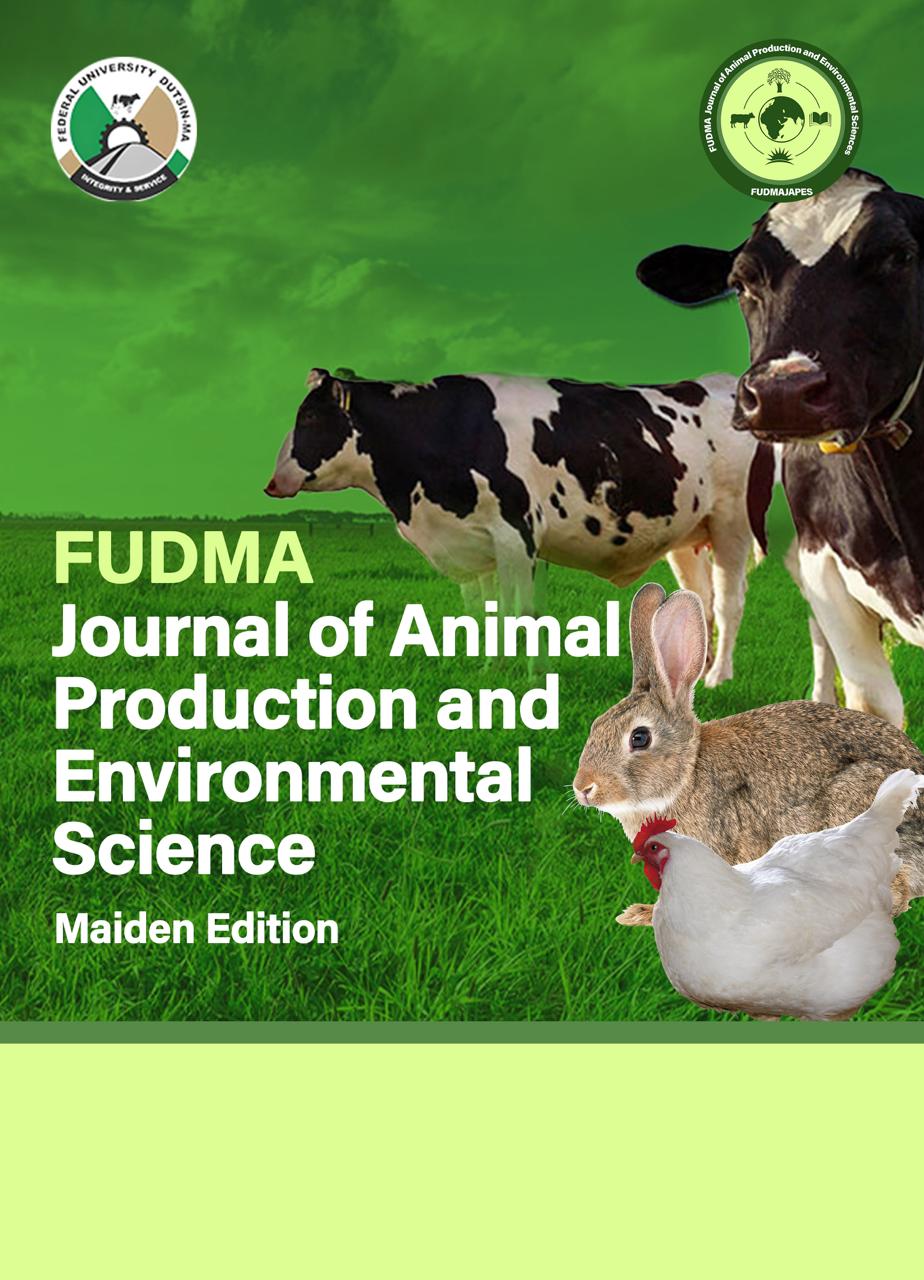ISOLATION AND IDENTIFICATION OF MICROBIAL BIOMASS FROM RUMEN FLUID OF YANKASA RAMS FED COWPEA HAY AND GROUNDNUT HAULMS AS SUPPLEMENTS
DOI:
https://doi.org/10.33003/japes.2025.v1i1.82-89Keywords:
Bacteria, fungal, protozoan, rumen fluid, rumen pHAbstract
This study was conducted to assess the influence of cowpea hay and groundnut haulms supplementation on the rumen characteristics of Yankasa rams. The study involved the use of Sixteen (16) Yankasa rams of equal weight randomly assigned to four treatment groups: Rice straw (Treatment I), groundnut haulms (Treatment II), cowpea hay (Treatment III) and combination of cowpea and groundnut haulms (Treatment IV). The experiment was laid out in a Completely Randomized Design (CRD) with four (4) replications for 84 days. About 15 ml of rumen liquor was drawn individually from all the experimental animals from which pH and microbial biomass were determined according to standard protocols. Data obtained for rumen pH and microbial loads were analyzed using Analysis of Variance with Least Significant Difference used to separate significant means at 5% level. Significant difference (P≤0.05) was found in the rumen fluid pH and microbial counts among the treatment groups. High microbial counts were recorded among Treatment II while Eight different bacterial species were identified with Treatment II having the highest number of bacterial species . Similar result was recorded for fungal species. Three different fungal species were isolated from the rumen fluids in the present study. These are: Piramonas communis, Sphaeromonas communis and Pilobolus spp. However, Treatment I had the highest number of protozoan species (4 different species). The findings from this study implies that, supplementation of basal rice straw with cowpea hay and groundnut haulm led to improvement in the composition of microbial biomass that aided digestibility and rumen fermentation within Yankasa rams making nutrients available for absorption and assimilation. Treatment II having the highest number of bacterial species is recommended.






